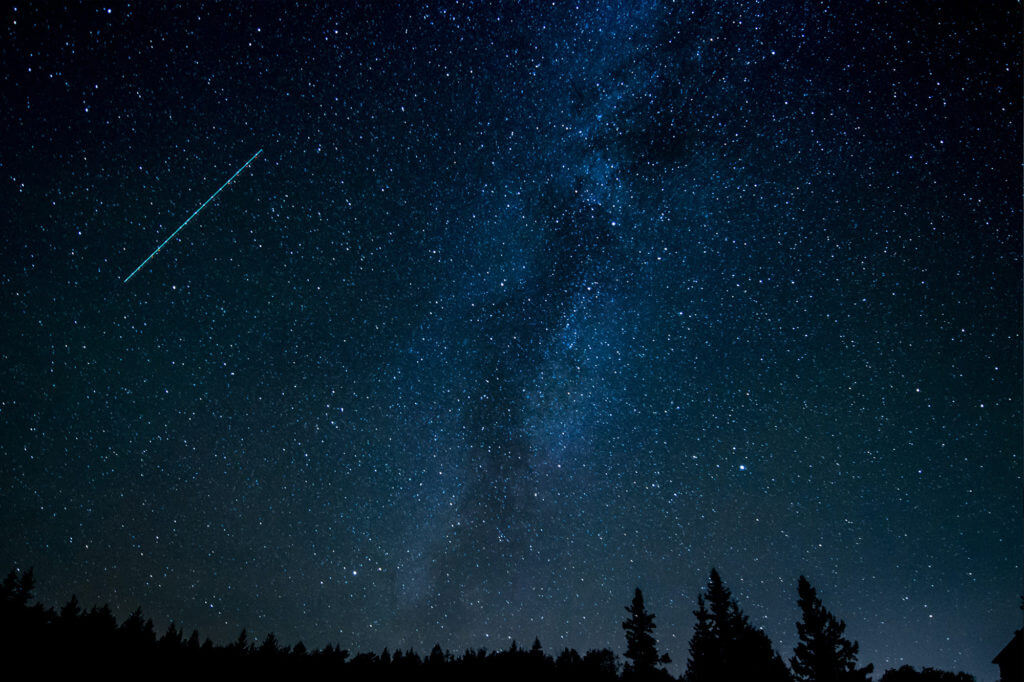
Look on the Upside.
With the advent of spring, the warming temperatures will allow you to open your windows at night or head out to your backyard to view the beauty and wonder of the night sky. Make the evening extra special when you create the full mountain experience by roasting a marshmallow or two and enjoying them between melty chocolate and crunchy graham crackers! Enjoy the star-studded sky any night at home or choose the following dates for special stargazing opportunities during April and May 2020.
April 18 – Comet Atlas
Expected to become bright enough to see with unaided eyes in May, the comet Atlas should also be observable by binoculars on the moonless night of April 18th. When the sky has darkened, face northwest and direct your binoculars towards the star Capella and dimmer Polaris. The comet will appear as a fuzzy grey patch elongated by its developed tail. If you’re using a telescope, it might also show a hint of green.
April 22 – Lyrids Meteor Shower
Lyrid meteors are produced by dust particles left behind by comet Thatcher. Meteors will be visible from April 16th to 25th with up to 20 meteors per hour on the night of April 22nd. With a nearly new moon, the skies will be nice and dark for viewing this year’s shower.
April 23 & May 22 – New Moon
When the moon passes between the Earth and sun, the sunlight only shines on the side of the moon aimed away from the Earth, therefore, the moon is hidden from our view. The rest of the starry sky appears brighter on these dark nights, making for great stargazing evenings.
May 2 – Astronomy Day
Conceived in 1973 as a way to open the eyes of people in urban areas to the skies above, various telescopes were setup in busy public places to encourage those passing by to enjoy views of the heavens. The first Astronomy Days were held on a Saturday between mid-April and mid-May, scheduled to coincide with the first quarter moon. In 2007, a second annual Astronomy Day was added in the fall to coincide with the first quarter moon between mid-September and mid-October.
May 4-5 – Eta Aquarids Meteor Shower
Produced by dust particles from Halley’s comet, these swift meteors produce higher numbers of persistent trains, but fewer fireballs, with an average meteor count of 30 per hour.
May 7 – Supermoon
When the Earth is situated directly between the sun and the moon, the moon is fully illuminated creating a full moon. A full moon appears even brighter and larger than usual when it’s at its closest distance to the Earth creating a Supermoon.
Visible Planets:
Mars, Jupiter, and Saturn – are visible in the pre-dawn sky. A very bright Jupiter rises first about 3 hours before the Sun, followed next by a yellowish Saturn, and finally the reddish Mars.
Venus – The only planet to be visible in the evening sky will shine brightly in the west. It will be visible near the Pleiades star cluster and slightly beneath Aldebaran, the brightest star in the constellation Taurus.